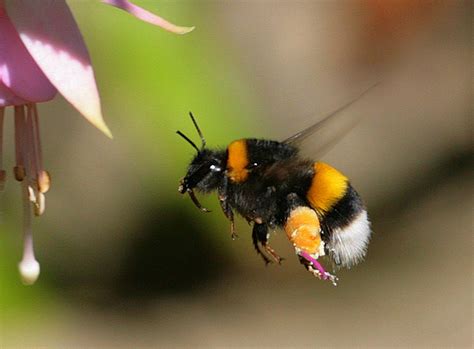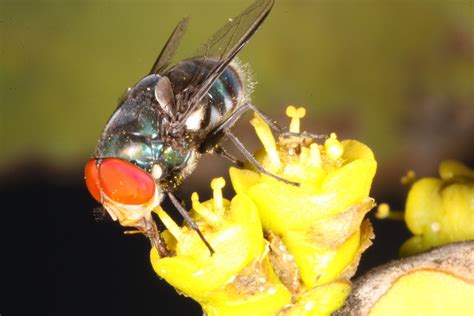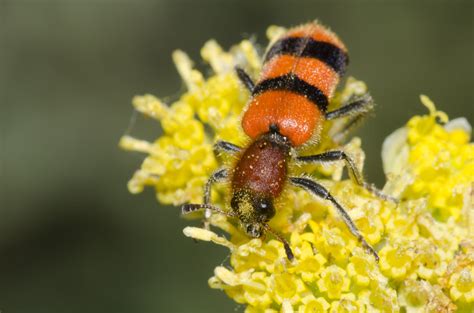Welcome to the Pollinator Sighting Research Project!
We need your help to track and study pollinators in our community. By submitting your sightings, you can contribute to our understanding of these important creatures.
About the Organization
Our organization is dedicated to the study and conservation of pollinators. We believe that by working together, we can protect these vital species and ensure a healthy environment for future generations.
About the Different Types of Pollinators
Pollinators come in all shapes and sizes, from familiar bees and butterflies to lesser-known flies and beetles. By learning more about the different types of pollinators, you can help us protect and conserve these important creatures.
Bees and bumblebees

Bees and bumblebees are two of the most well-known and important types of pollinators. They are essential to the health of our ecosystems, as they help to pollinate a wide variety of plants, including many that are used for food production.
Bees are small, flying insects that belong to the Apidae family. There are over 20,000 known species of bees, ranging in size from less than 1 millimeter (0.04 inches) to over 4 centimeters (1.6 inches) in length. Bees are characterized by their hairy bodies, which they use to collect pollen from flowers. They have a pair of wings and a long, tube-like tongue called a proboscis, which they use to drink the nectar from flowers.
Bumblebees are a type of bee that belong to the Bombus genus. There are over 250 known species of bumblebees, and they are found on every continent except Antarctica. Bumblebees are larger and hairier than most other bees, and they have distinct black and yellow stripes. Like other bees, bumblebees have a pair of wings and a long, tube-like tongue.
Both bees and bumblebees play a crucial role in pollination. When a bee or bumblebee visits a flower to collect nectar and pollen, some of the pollen sticks to the hairs on its body. As the bee moves on to the next flower, some of this pollen is transferred to the new flower, causing pollination to occur. This process is essential for the reproduction of many plants, including many that are used for food production.
Bees and bumblebees are facing numerous threats, including habitat loss, pesticide exposure, disease, and climate change. These threats are causing populations of bees and bumblebees to decline, which has serious implications for our ecosystems and food supply. To help protect bees and bumblebees, it is important to take actions such as planting native flowers, reducing pesticide use, and supporting conservation efforts.
In conclusion, bees and bumblebees are important pollinators that play a crucial role in the health of our ecosystems and food supply. They are facing numerous threats, and it is important to take action to help protect them. By planting native flowers, reducing pesticide use, and supporting conservation efforts, we can help ensure the survival of these vital creatures.
Butterflies

Butterflies are a group of insects that belong to the order Lepidoptera. They are characterized by their colorful, patterned wings, which are covered in tiny scales. There are over 17,500 known species of butterflies, ranging in size from less than 1 centimeter (0.4 inches) to over 30 centimeters (12 inches) in wingspan.
Butterflies have a four-stage life cycle: egg, larva (caterpillar), pupa (chrysalis), and adult. The larval stage is the longest, and it is during this time that the butterfly grows and develops. After the larval stage, the butterfly enters the pupal stage, during which it transforms into its adult form. The adult butterfly emerges from the pupal case, or chrysalis, and begins its short, but active, adult life.
Butterflies are found on every continent except Antarctica, and they inhabit a wide variety of habitats, including forests, grasslands, deserts, and wetlands. They are most active during the day, and they are often seen flitting from flower to flower in search of nectar.
Butterflies play a crucial role in pollination, as they help to transfer pollen from one flower to another as they feed on nectar. This helps to ensure the reproduction of many plant species, including some that are used for food production.
Like other insects, butterflies are facing numerous threats, including habitat loss, pesticide exposure, disease, and climate change. These threats are causing populations of butterflies to decline, which has serious implications for our ecosystems and food supply. To help protect butterflies, it is important to take actions such as planting native flowers, reducing pesticide use, and supporting conservation efforts.
In conclusion, butterflies are a diverse and beautiful group of insects that play a crucial role in pollination. They are facing numerous threats, and it is important to take action to help protect them. By planting native flowers, reducing pesticide use, and supporting conservation efforts, we can help ensure the survival of these vital creatures.
Flies

Flies are a group of insects that belong to the order Diptera. They are characterized by their single pair of wings, which are used for flying, and their two halteres, which are small, club-shaped structures that help them to balance and maneuver. There are over 150,000 known species of flies, ranging in size from less than 1 millimeter (0.04 inches) to over 10 centimeters (4 inches) in length.
Flies have a three-stage life cycle: egg, larva (maggot), and adult. The larval stage is the longest, and it is during this time that the fly grows and develops. After the larval stage, the fly enters the pupal stage, during which it transforms into its adult form. The adult fly emerges from the pupal case and begins its short, but active, adult life.
Flies are found on every continent except Antarctica, and they inhabit a wide variety of habitats, including forests, grasslands, deserts, and wetlands. They are most active during the day, and they are often seen flying and buzzing around flowers, garbage, and other sources of food.
Flies play a crucial role in the ecosystem, as they help to break down and recycle organic matter. They are also important pollinators, as they help to transfer pollen from one flower to another as they feed on nectar.
Like other insects, flies are facing numerous threats, including habitat loss, pesticide exposure, disease, and climate change. These threats are causing populations of flies to decline, which has serious implications for our ecosystems and food supply. To help protect flies, it is important to take actions such as planting native flowers, reducing pesticide use, and supporting conservation efforts.
In conclusion, flies are a diverse and important group of insects that play a crucial role in the ecosystem. They are facing numerous threats, and it is important to take action to help protect them. By planting native flowers, reducing pesticide use, and supporting conservation efforts, we can help ensure the survival of these vital creatures.
Beetles

Beetles are a group of insects that belong to the order Coleoptera. They are characterized by their hard, shell-like forewings, which are known as elytra, and their hindwings, which are used for flying. There are over 400,000 known species of beetles, making them the largest group of animals on Earth. Beetles range in size from less than 1 millimeter (0.04 inches) to over 15 centimeters (6 inches) in length.
Beetles have a four-stage life cycle: egg, larva, pupa, and adult. The larval stage is the longest, and it is during this time that the beetle grows and develops. After the larval stage, the beetle enters the pupal stage, during which it transforms into its adult form. The adult beetle emerges from the pupal case and begins its short, but active, adult life.
Beetles are found on every continent except Antarctica, and they inhabit a wide variety of habitats, including forests, grasslands, deserts, and wetlands. They are most active at night, and they are often attracted to lights.
Beetles play a crucial role in the ecosystem, as they help to break down and recycle organic matter. They are also important pollinators, as they help to transfer pollen from one flower to another as they feed on nectar.
Like other insects, beetles are facing numerous threats, including habitat loss, pesticide exposure, disease, and climate change. These threats are causing populations of beetles to decline, which has serious implications for our ecosystems and food supply. To help protect beetles, it is important to take actions such as planting native flowers, reducing pesticide use, and supporting conservation efforts.
In conclusion, beetles are a diverse and important group of insects that play a crucial role in the ecosystem. They are facing numerous threats, and it is important to take action to help protect them. By planting native flowers, reducing pesticide use, and supporting conservation efforts, we can help ensure the survival of these vital creatures.
Submit a Sighting
To submit a sighting, please use the form below. We appreciate your help in advancing our understanding of pollinators.